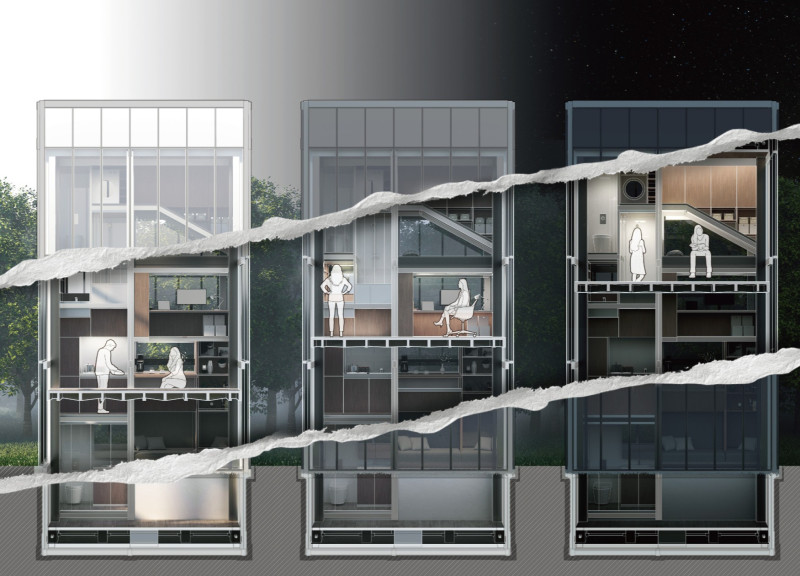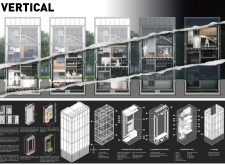5 key facts about this project
Innovative Design Approaches
This project distinguishes itself through its unique approach to vertical space utilization. The modular living units are strategically arranged to allow for flexibility in interior configurations. By incorporating program pods that can serve multiple purposes, the design addresses the varied requirements of occupants, enhancing both livability and user experience.
The extensive use of glass on the facade not only provides aesthetic appeal but also integrates energy-efficient technologies, such as low-emissivity glass that minimizes heat transfer. This design choice creates a transparent connection between the interior and the surrounding environment, promoting natural light and fostering a sense of openness.
Sustainability is a pivotal aspect of this architectural design. The incorporation of a rainwater harvesting system ensures efficient water usage, while green walls contribute to air purification and visual appeal. The installation of photovoltaic panels on the roof demonstrates a commitment to renewable energy, further positioning this project as an environmentally responsible solution in urban development.
Functional Elements and Strategic Layout
The structural framework of the building is predominantly composed of steel, offering robustness without compromising visual lightness. This choice of material supports the multi-story design while allowing for larger openings in the facade, facilitating seamless integration of the outdoor and indoor environments.
The interior spaces are designed with a minimalist approach, incorporating natural finishes such as wood to enhance warmth and comfort. Smart home technology is integrated throughout the building, providing residents with control over their living environments. This technological integration promotes energy efficiency and elevates the overall living experience.
To gain deeper insights into the architectural plans, architectural sections, and architectural ideas that define this project, individuals interested in explored design can review the complete project presentation. This detailed exploration will offer further understanding of the innovative solutions and practical applications that contribute to contemporary urban architecture.























